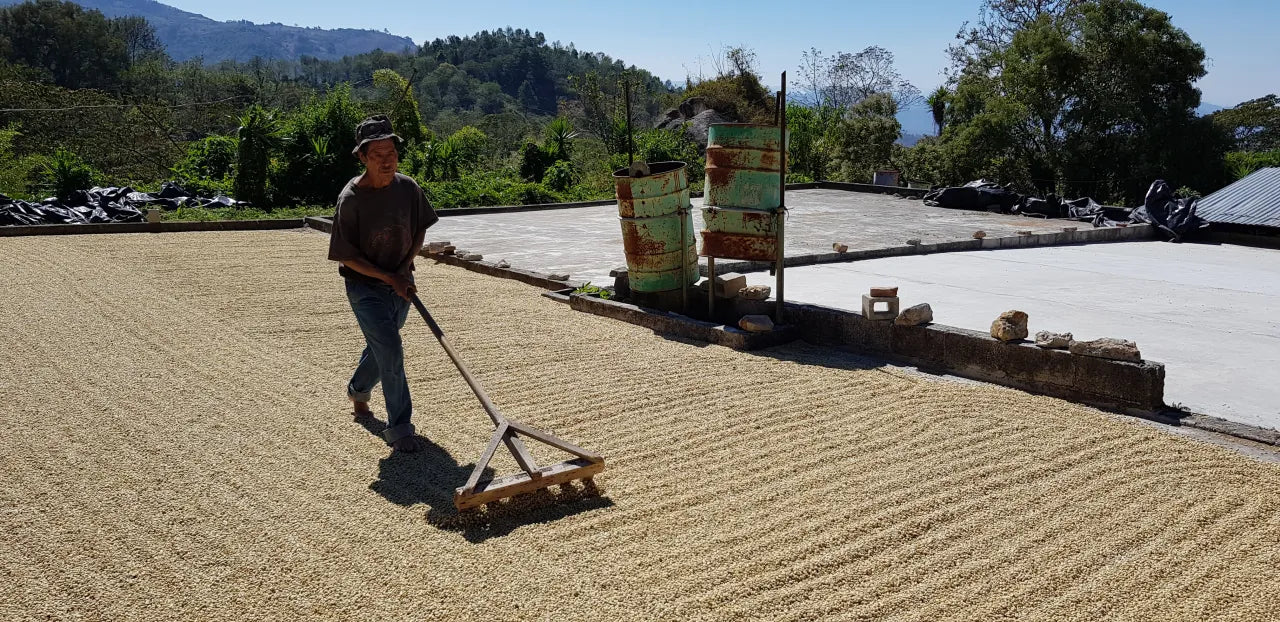
Patio
Patio Drying Method in Coffee Processing
1. Historical Background
Patio drying is one of the oldest and most traditional methods of drying coffee, with origins tracing back to early coffee-producing regions such as Ethiopia and Yemen, and later Latin America. Before the advent of modern mechanical drying equipment, farmers used naturally available surfaces—such as stone, clay, or concrete patios—to dry harvested coffee beans under the sun. The method became a hallmark of washed and natural coffee processing, especially in countries with long dry seasons and predictable weather conditions. To this day, patio drying remains widespread in places like Colombia, Brazil, Guatemala, and Ethiopia, valued for its low cost and minimal environmental impact.
2. Technical Approach and Process
In the patio drying method, coffee—either in parchment (after depulping and washing) or in its whole cherry form (for natural processing)—is spread out in thin layers across flat, open-air patios made of concrete, brick, clay, or tile. The beans are exposed to direct sunlight and are regularly raked or turned (often every 30–60 minutes) to ensure even drying and prevent mold or fermentation. This drying process can last anywhere from 6 to 20 days depending on weather conditions, altitude, and the type of processing. Once moisture content reaches around 10–12%, the coffee is moved to storage or mechanical silos for final stabilization before hulling and export.
3. Impact on Flavor and Quality
Patio drying allows for slow, natural moisture loss, which—when done carefully—can preserve the integrity of the coffee’s flavor. Washed coffees dried on patios often maintain a clean, bright, and balanced profile, while natural processed coffees tend to develop richer, more fruit-forward characteristics. However, patio drying also introduces greater variability due to fluctuating sunlight, temperature, and humidity. If not properly managed, beans can develop uneven moisture content or defects like sour, phenolic, or moldy flavors due to poor airflow or inconsistent turning. As a result, success with patio drying depends heavily on daily monitoring and farmer experience.
4. Practical Considerations and Limitations
While patio drying is inexpensive and energy-efficient, it requires significant labor, space, and consistently dry weather. In tropical or high-rainfall areas, this method becomes risky without covered patios or retractable plastic sheeting. Additionally, large volumes of coffee can be difficult to dry uniformly without the use of raised beds or mechanical assistance. Farmers with limited land may not be able to dry multiple lots at once, leading to delays or quality compromises. Nevertheless, for small to medium-sized producers in favorable climates, patio drying remains a dependable and accessible technique.
5. Outlook
As specialty coffee markets continue to demand traceability and processing transparency, traditional methods like patio drying are being reassessed and refined. Producers are improving patio designs with gentle slopes for drainage, windbreaks, and shading systems to protect against afternoon heat or unexpected rain. Some are combining patio drying with mechanical dryers to reduce drying time while preserving quality. While raised beds and silo dryers offer more control, many farmers—especially in Latin America and East Africa—continue to rely on patios due to their simplicity, cost-effectiveness, and cultural significance in the post-harvest process.
Shop Raised Bed-Dried Coffees
-
 Sold out
Sold outDoña Maria
Regular price From $19.00 USDRegular priceUnit price / per

